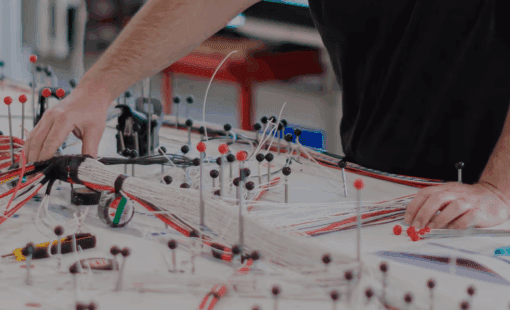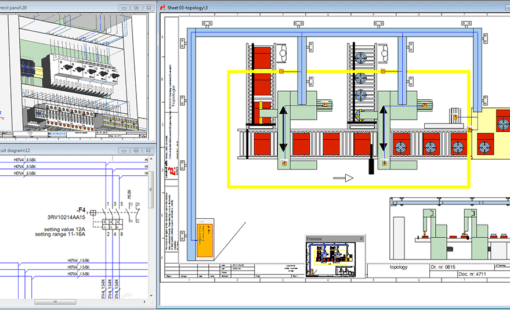The Ideal State for Design Teams
In an ideal product design process, everything from the initial idea to manufacturing is connected. The products are designed using functionality design principles, and the functional design intelligently drives the detailed design. Not only is there no need to recreate or rewrite product data, but a common dataset also drives various representations. That is to say, every step towards developing the product is transforming the data to see it from a different perspective. Suffice to say, we are not there yet. However, the concept of digital transformation is quickly pushing in the right direction–a rapid push towards digital engineering and connecting various design disciplines with a digital thread.

The Current State of Design
A typical product design starts with a great idea sketched on a napkin, jotted on paper, or detailed in a formal document. Naturally, the discussions progress from ‘can we’ to ‘what if’ to ‘how can’ as the product development process moves along. As a result, the documentation increases in size and detail. At this point, the detailed design hasn’t yet started, so all the documentation describes the requirements, functionality, and high-level architecture. The point of transfer to detailed design varies across the board. However, we can expect that more well-established teams will have a descriptive package for the detailed design team to use as a reference.
Unfortunately, the hand-off to detailed design means a lot of the work done ahead of time needs to be understood, put in the proper context, and recreated to make it available for further design detailing. There is little to no parametric connection between conceptual design efforts and detailed design. Notably, it is not because of a lack of interest or intent. The most common reason is the perceived lack of ability to switch contexts and transform the underlying data using a common toolset.
Functional Design by Definition
The definition of the term functional design differs across disciplines, industries, and even across design teams. At its core, it focuses on the purpose, interactions, behavior, and users. At times, it is a method, while other times, it is a discipline. In the electrical design space, it is about creating a high-level systems design while working with abstract data and managing ambiguity.
A functional design forgoes the selection of parts and focuses on capturing and implementing the required outcome. For instance, it is important to know we are using a camera in our product. Also, it may be advantageous to know that the camera typically accepts four connections. However, there is little benefit in knowing the part number of the connector in the initial stages. It is the foundation of detailed design and will ultimately transform into a functioning schematic.
Ideally, further detailed work on the schematic will include adding and creating information for manufacturing the products. The ability to carry over a conceptual design into a detailed schematic, cable, and panel design phase is highly desirable. Most excitingly, there is a market momentum towards connecting functional design and detailed design.
Connecting Functional Design to Detailed Design
At Zuken, we are engaging in markedly more conversations about the functional design elements of our E3.series solutions. Zuken’s E3.series empowers our customers to combine conceptual models and detailed design in a single package. However, there is more to this process than functional descriptions. Complex systems require not only functional descriptions but also architectural definitions. To fully express a system’s functionality, the functions must be logically distributed, assigned to a topological system, and establish connectivity pathways between the system entities.
When we talk about functional design, we are talking about a holistic view of the product expressed conceptually, functionally, and architecturally. E3.topology, an extension of E3.series capabilities, provides this holistic view by connecting functional design to detailed design.

The View from Above – Harnessing Functionality Design and Detailed Design
E3.topology is an electrical system architecture design tool that is a licensed extension of the E3.series design suite. It is a combination of functionality design principles, cable-harness, and to-scale system layout capabilities. Simply put, E3.topology takes logical design into the physical world. As part of the overall E3.series project, this engineering will create the topology drawing to any scale; this drawing represents functional systems or installation spaces. The connection between the systems represents a harness or a cable. Easily assign parts and signals to system blocks, and the underlying schematic and connectivity logic will be hierarchically linked.
The resulting connectivity between blocks automatically transforms the wires into harnesses. Furthermore, the hierarchical nature of the design process enables rolled-up calculations and complex functional distribution. Most importantly, the tool quickly optimizes harness routes, component placement, and overall system distribution while maintaining functional capabilities.
The most common benefits of using this enhanced process include:
- Logical segregation of functions without sacrificing design details
- Apply and carry forward modularization from the conceptual design phase to the detailed design phase
- The connected environment reduces error and design oversights
- Potential for huge time-savings by avoiding rework
- An unrivaled opportunity to optimize the design process from start to end
Conclusion About Functional Design and Detailed Design
Many industries are quickly moving towards a holistic design and production model. A true digital transformation requires a robust connection across all phases of product design. However, design teams are not yet in the ideal position to take advantage of the best practices. A holistic look at tools, processes, and goals is imperative to chart the optimal path forward.
E3.topology is a proven tool to transition from functional to detailed design. It opens the path to creating robust functional designs and drives detailed product development in a common design environment.
Zuken and our partners lead the way in creating the ecosystem needed to go from concept to design to manufacturing seamlessly and with the best outcomes. The ability to capture design intent and apply it to every aspect of design is a transformative process.





